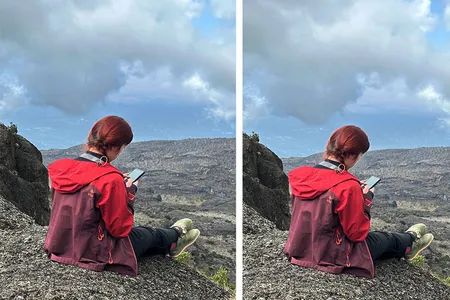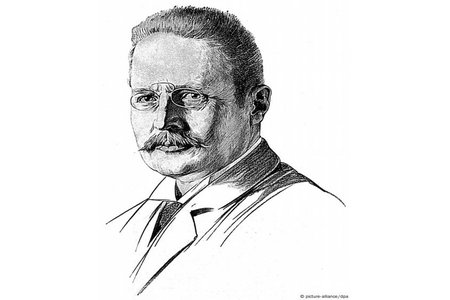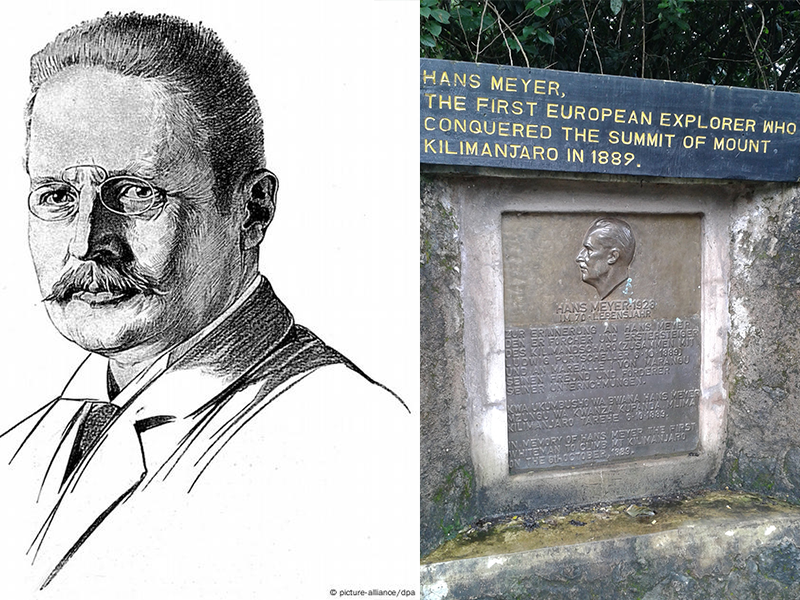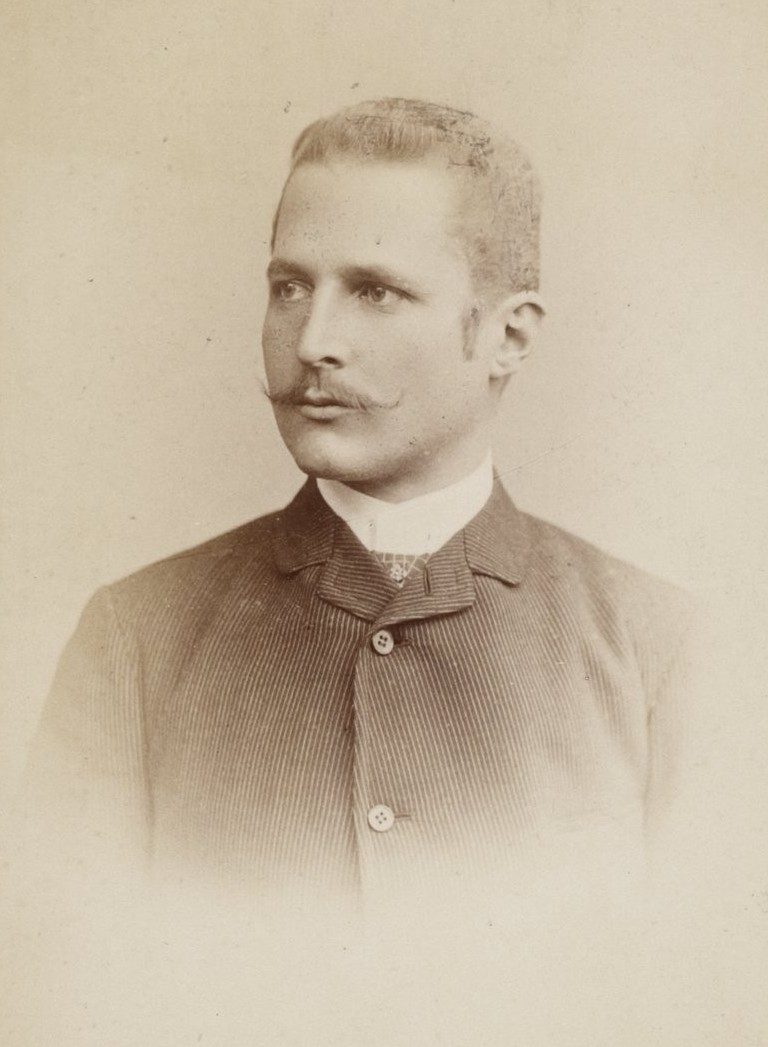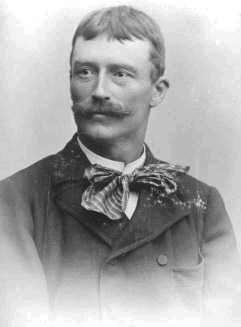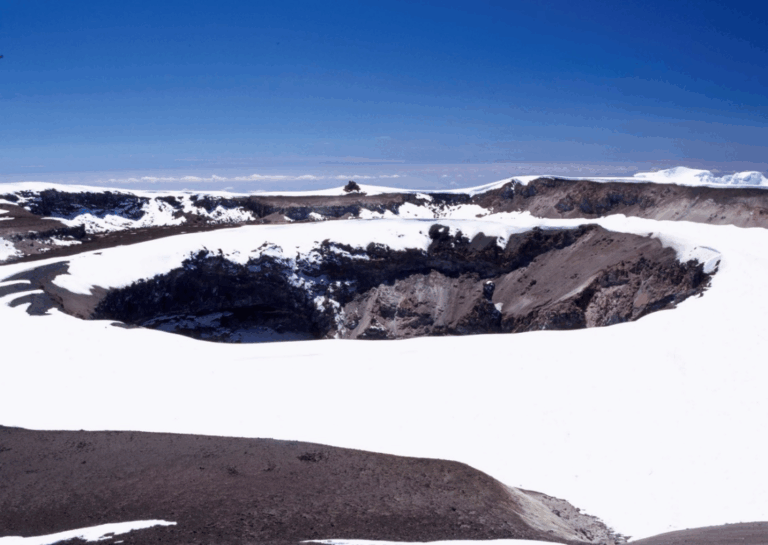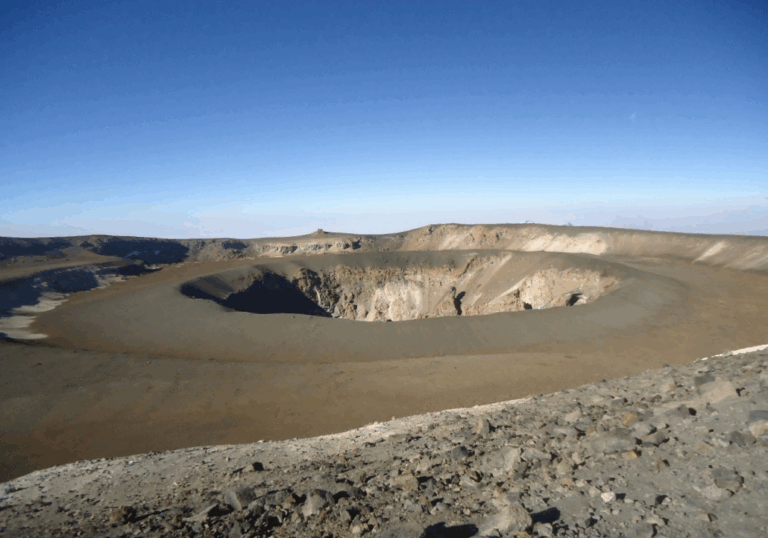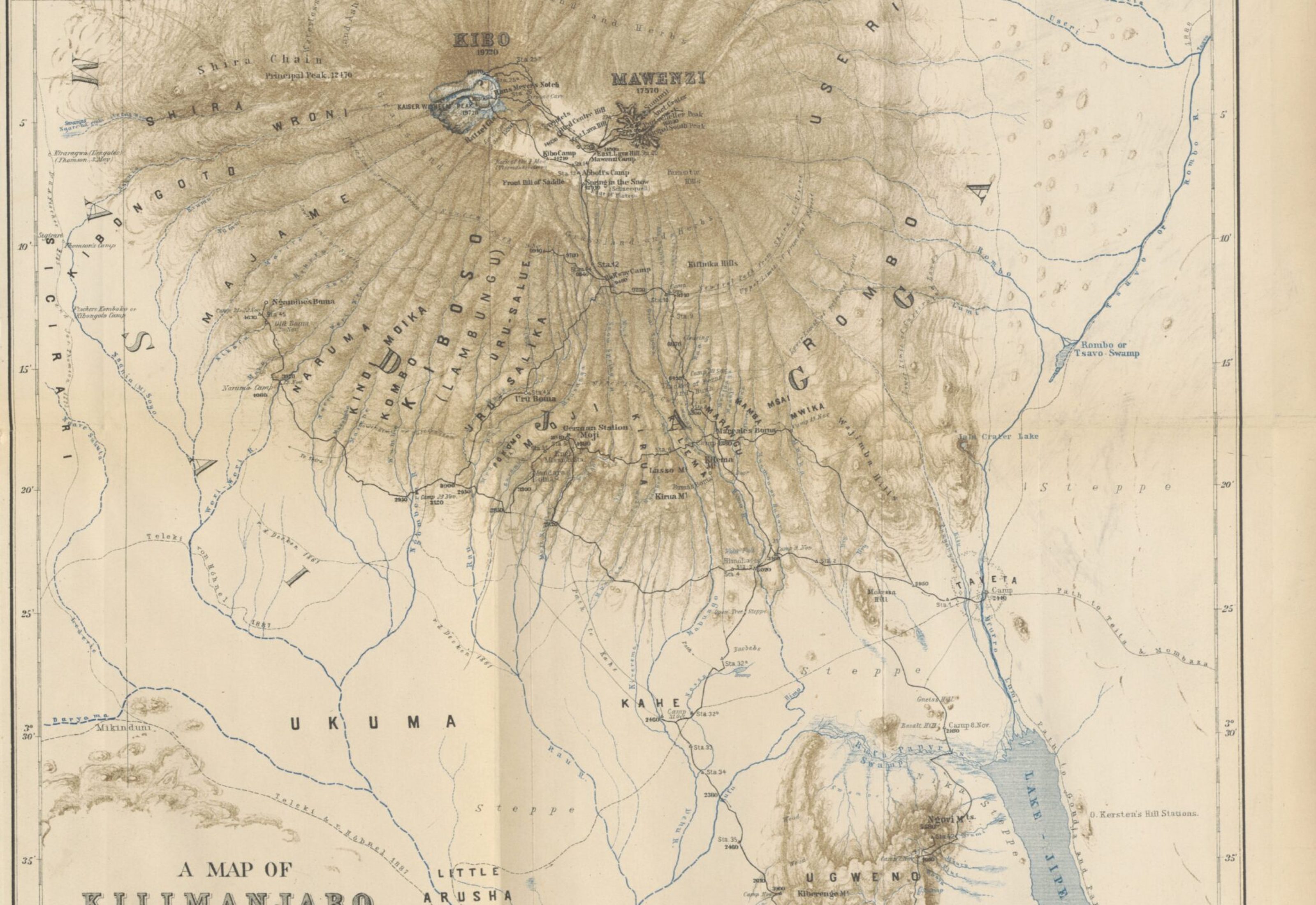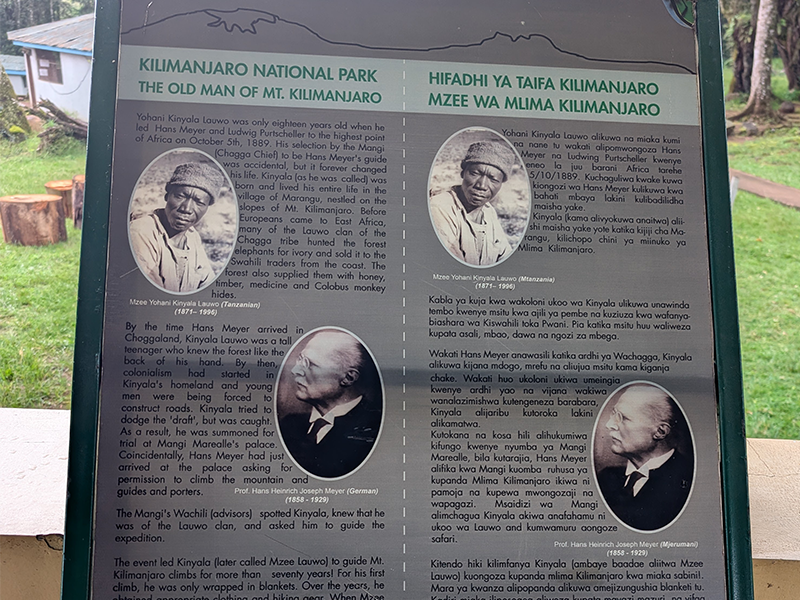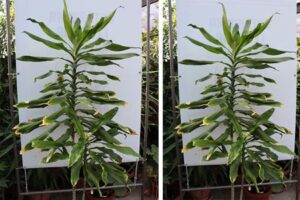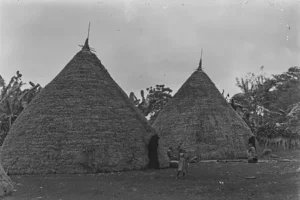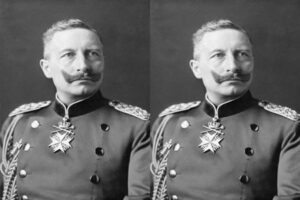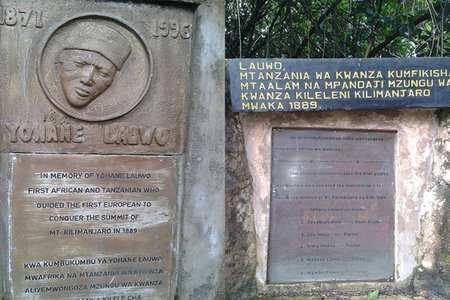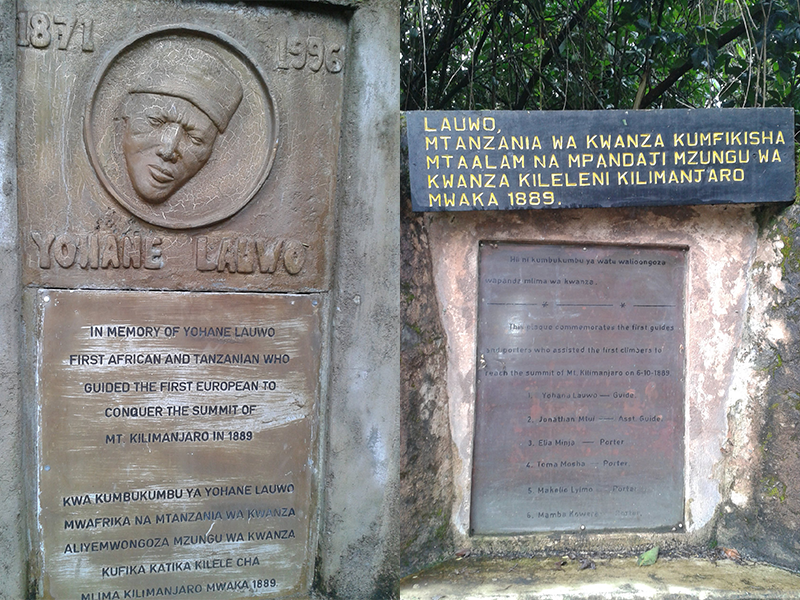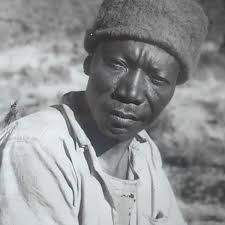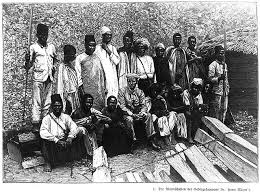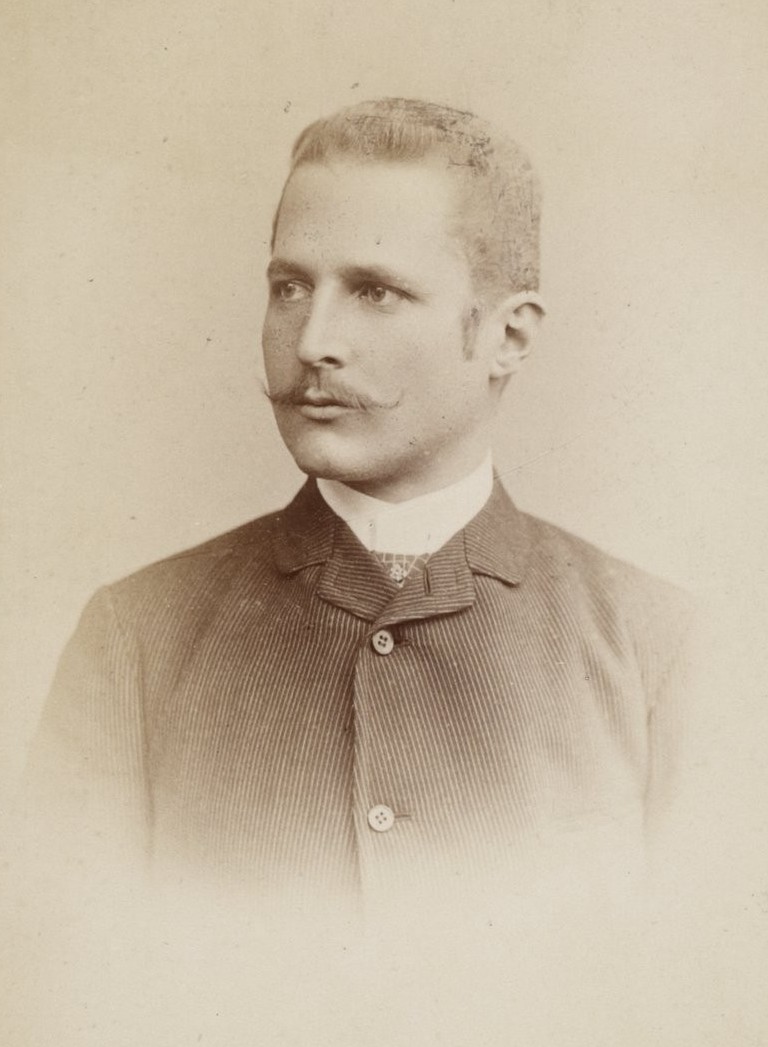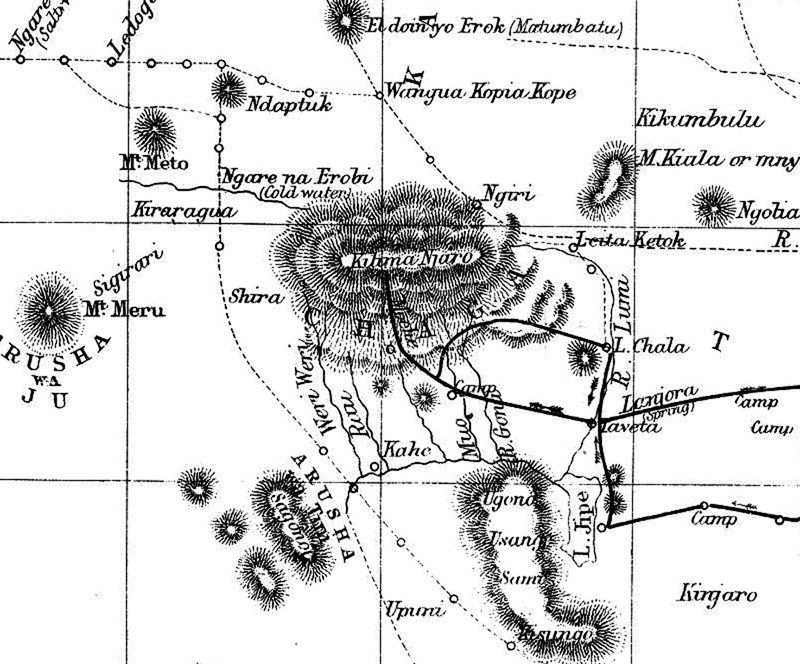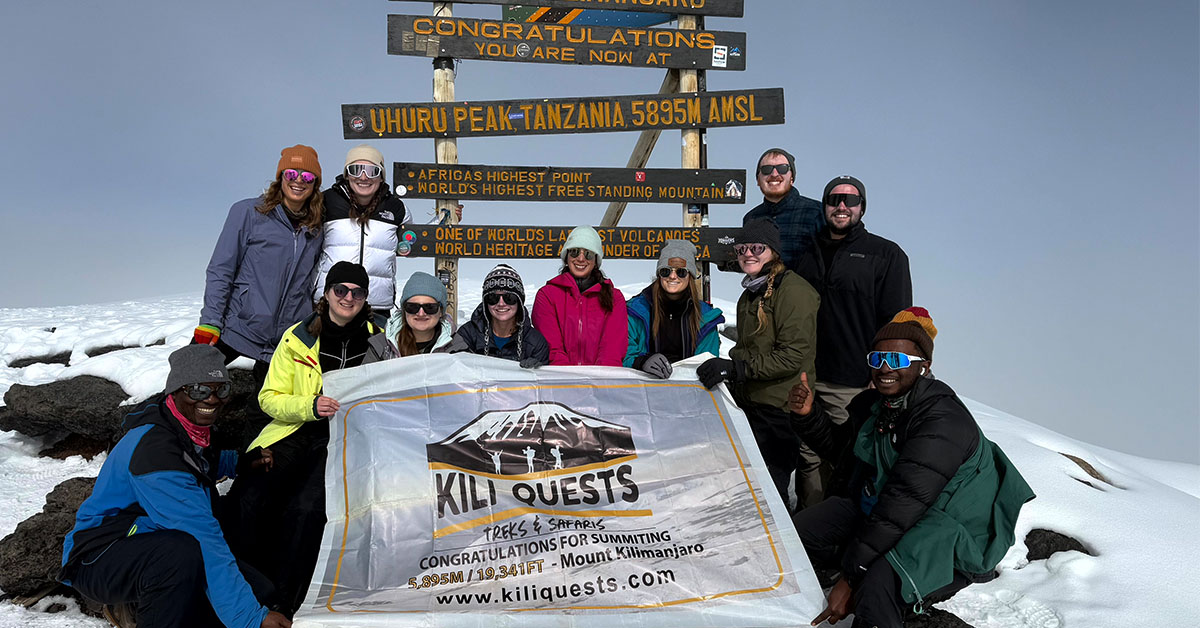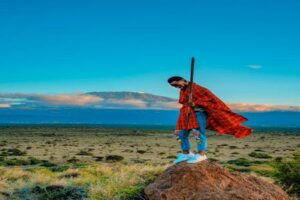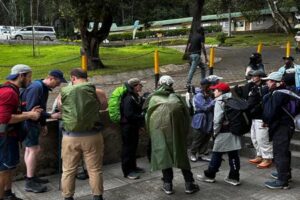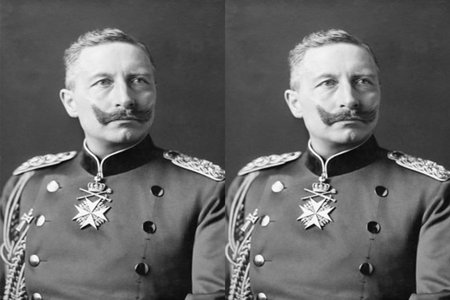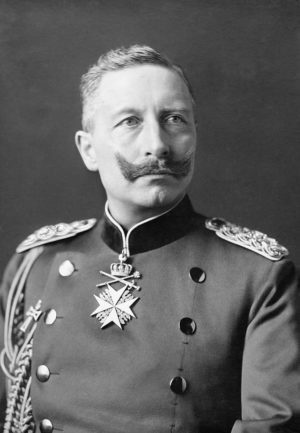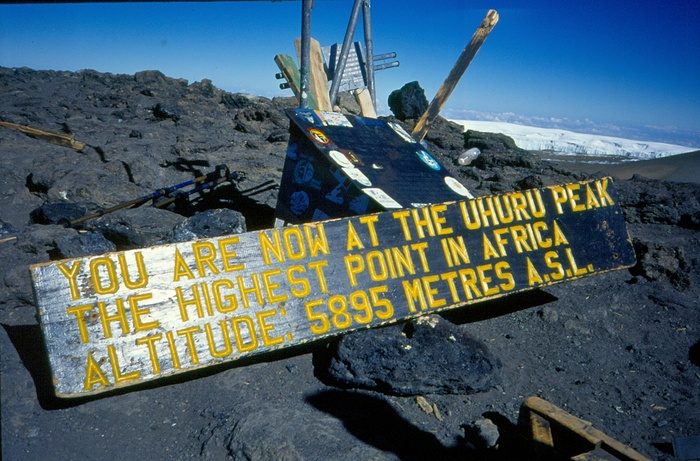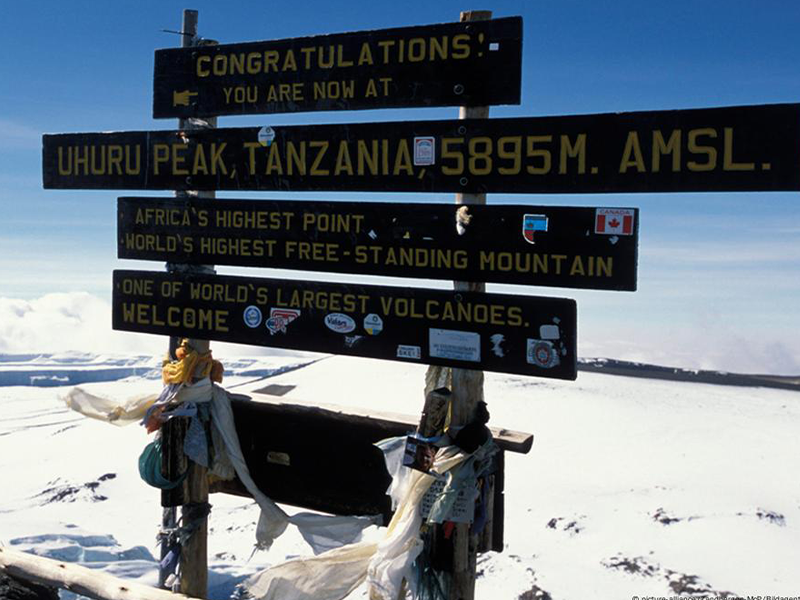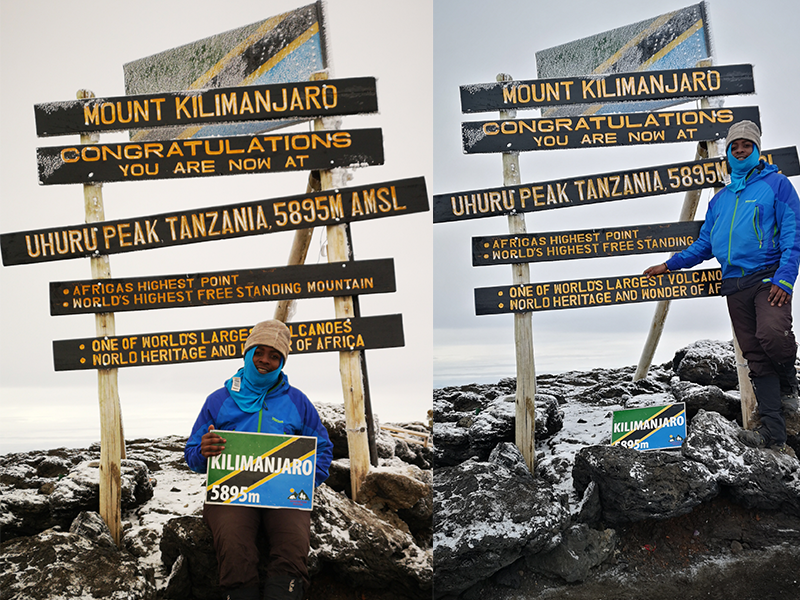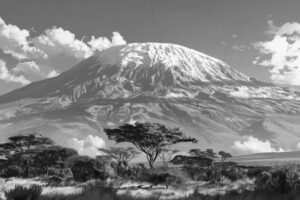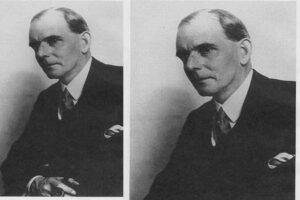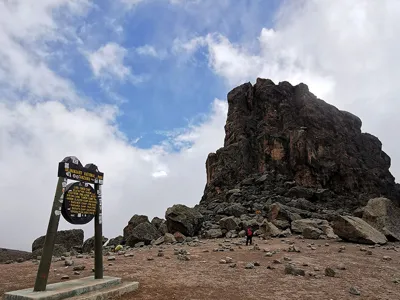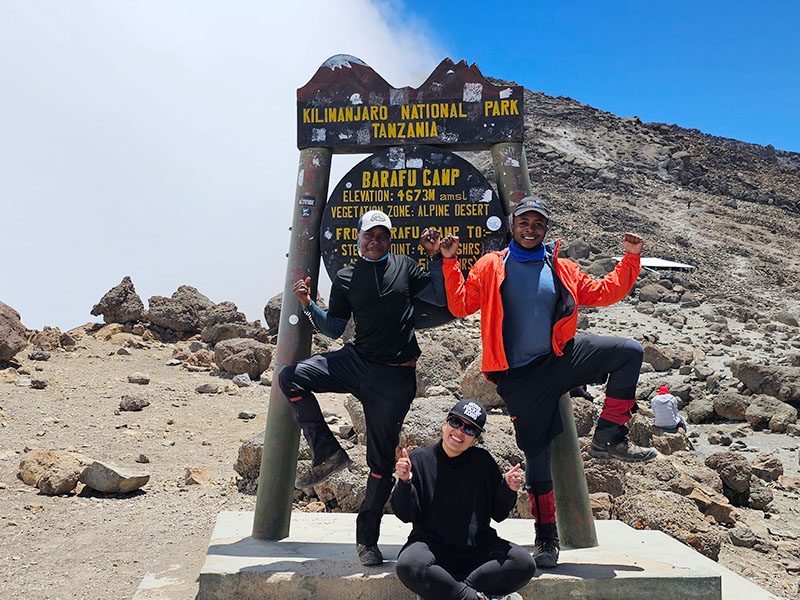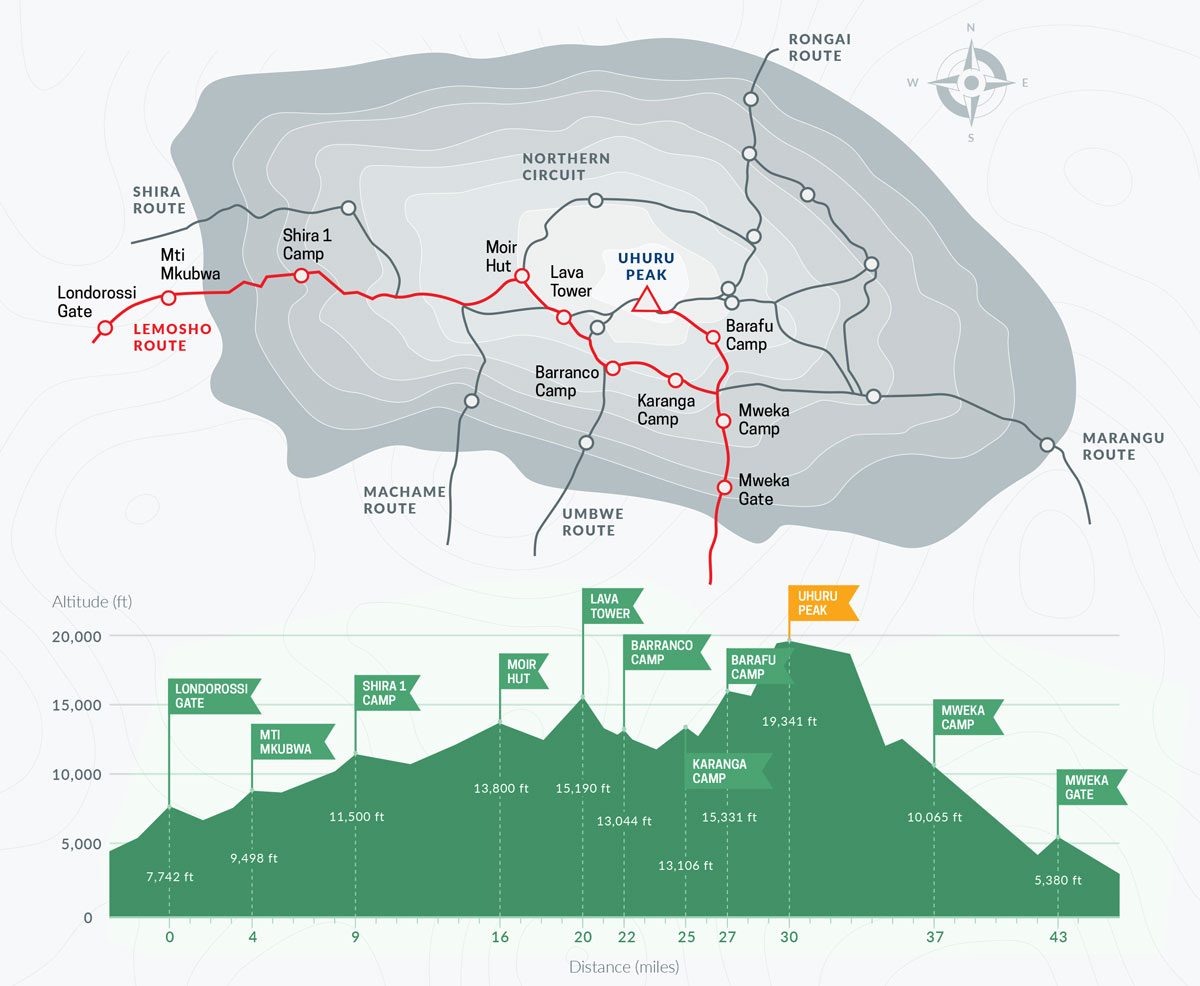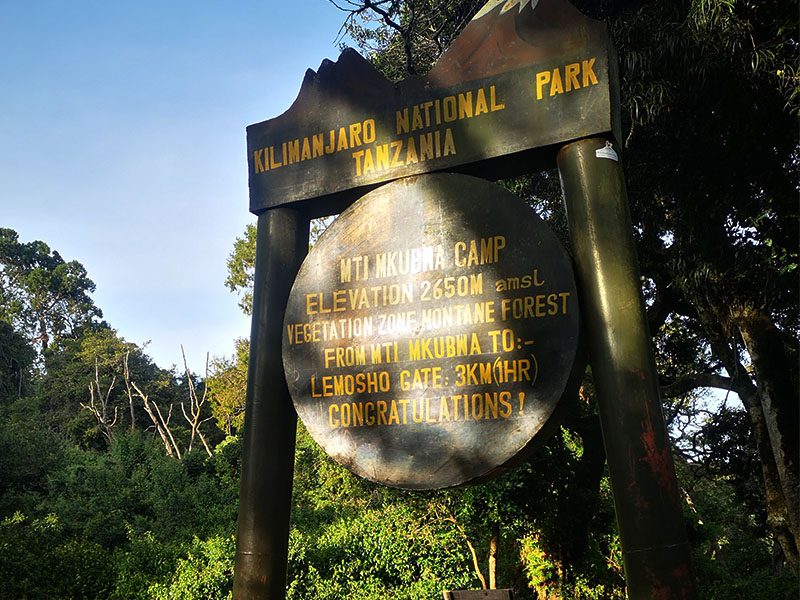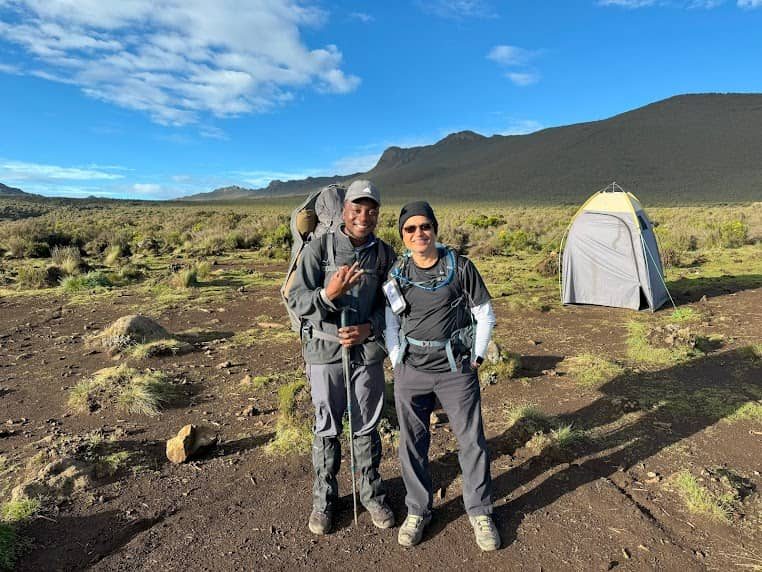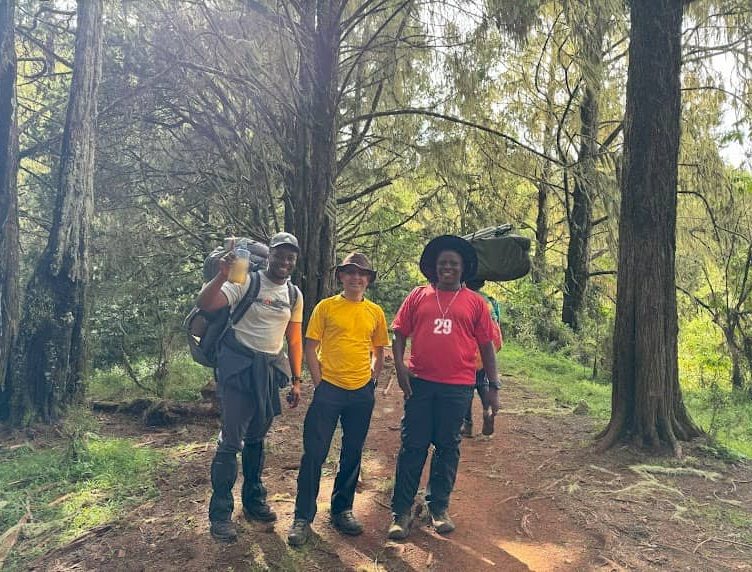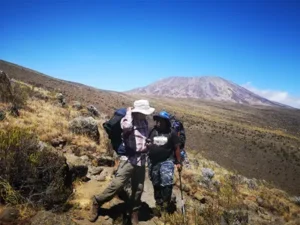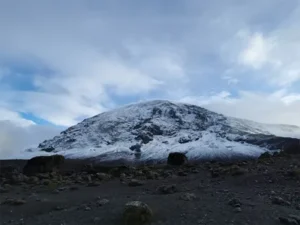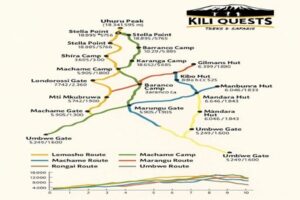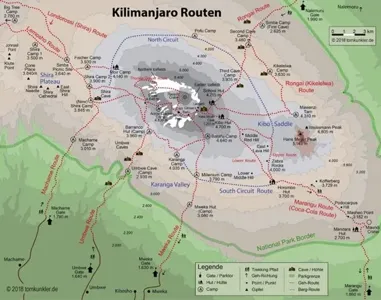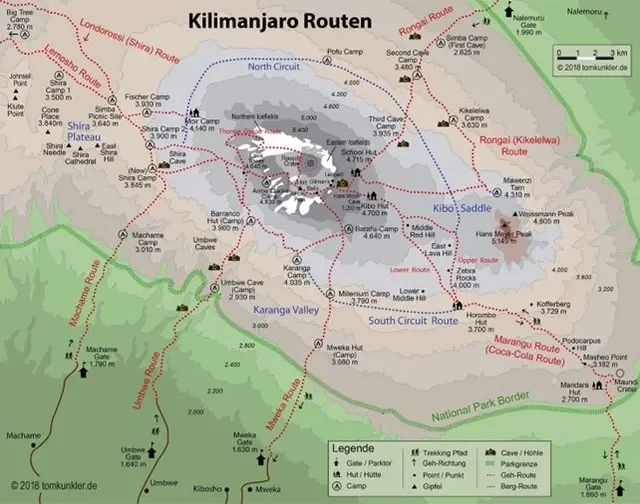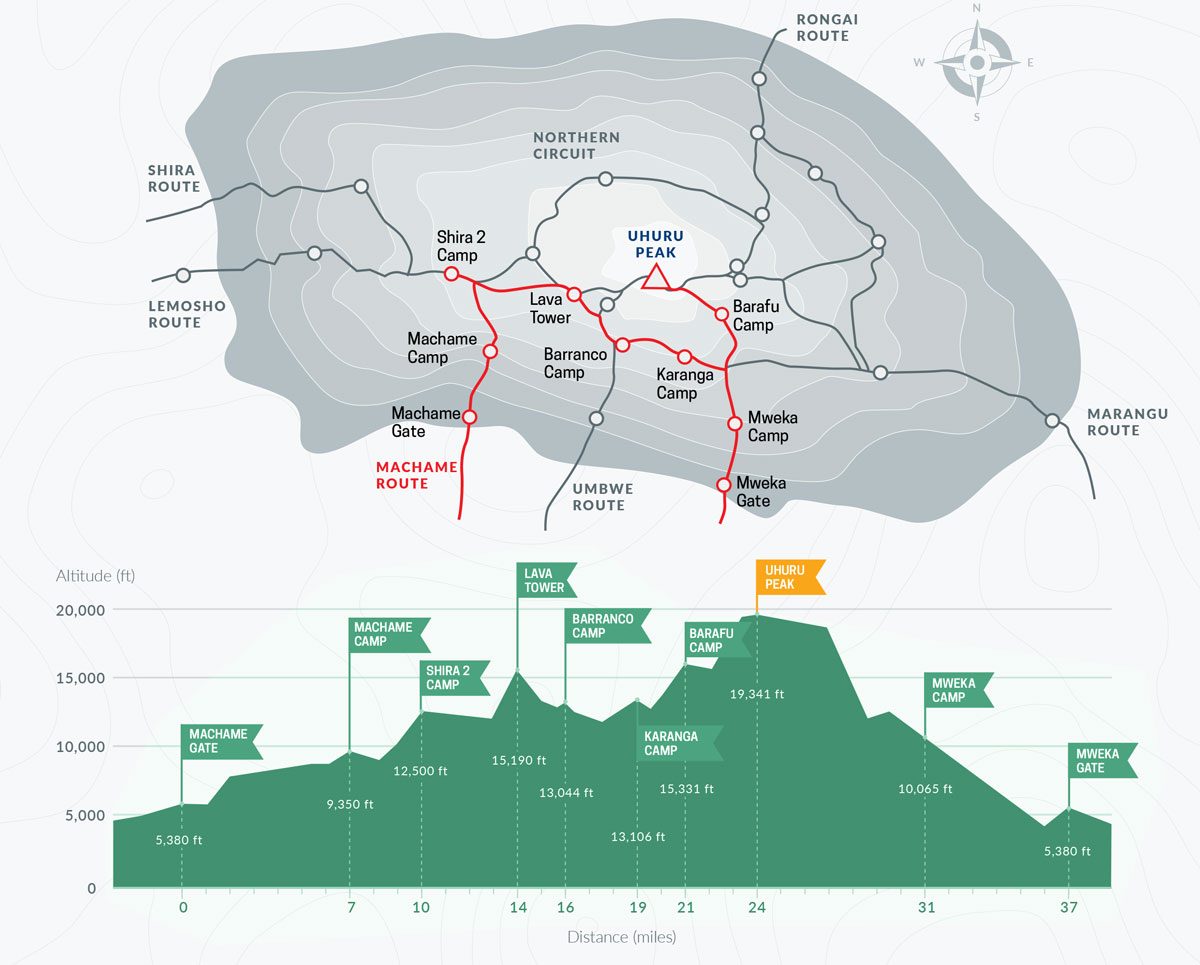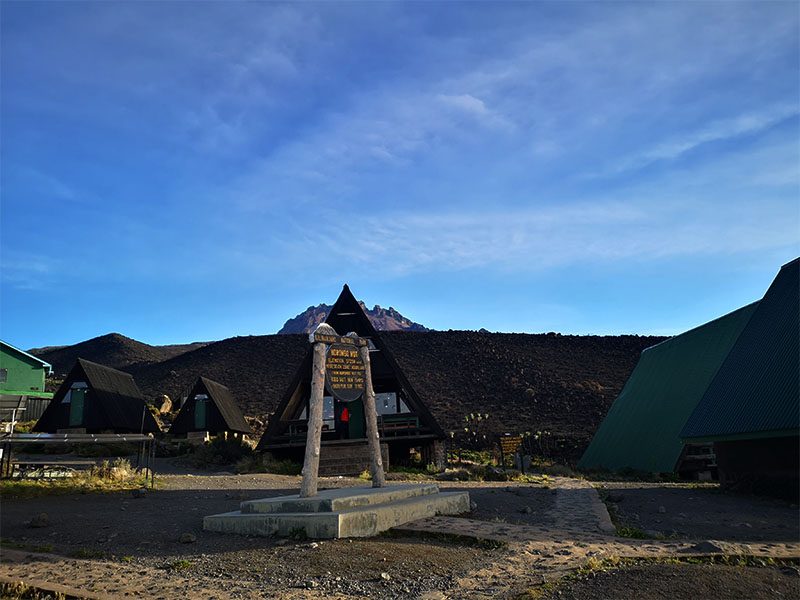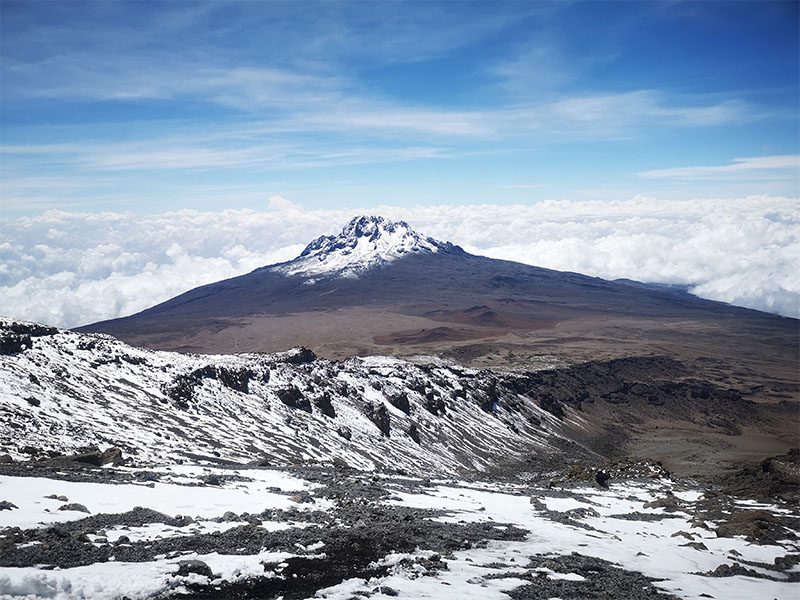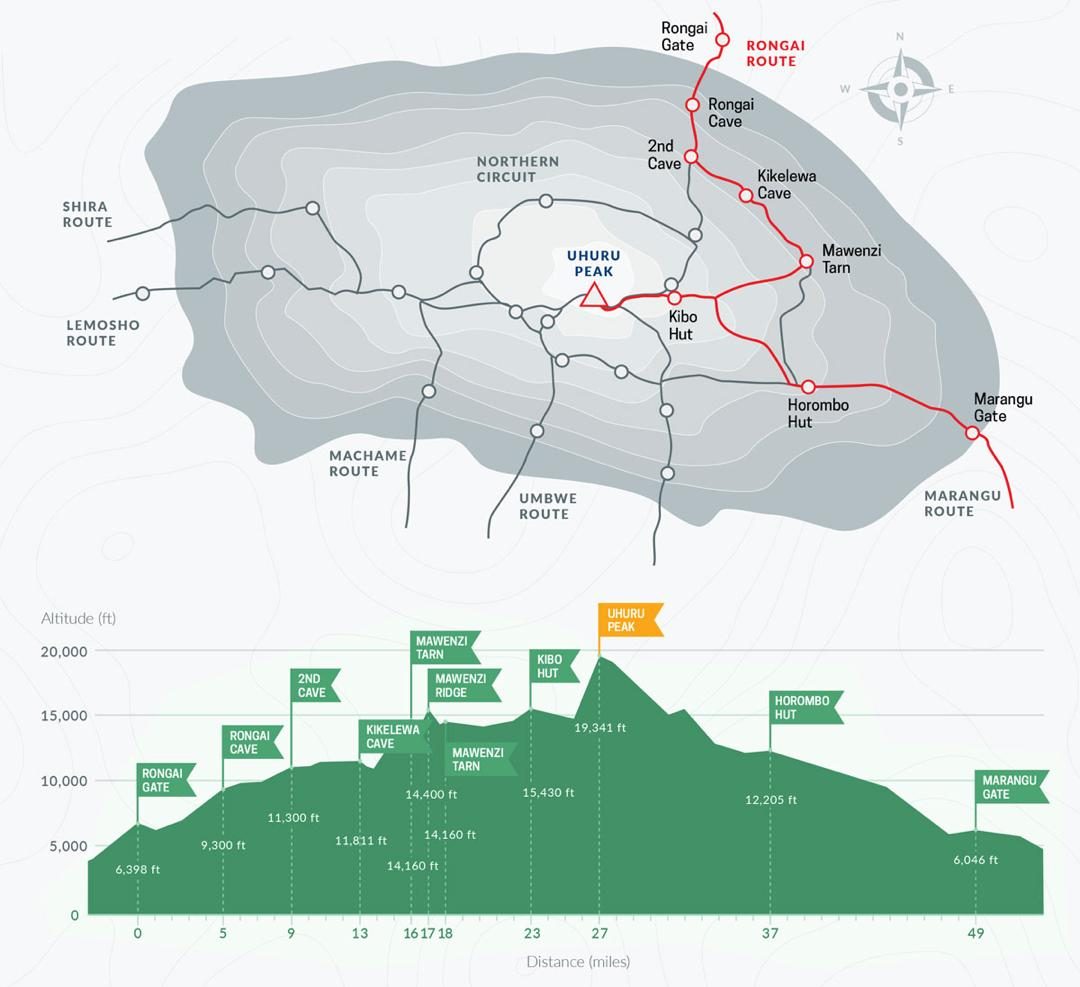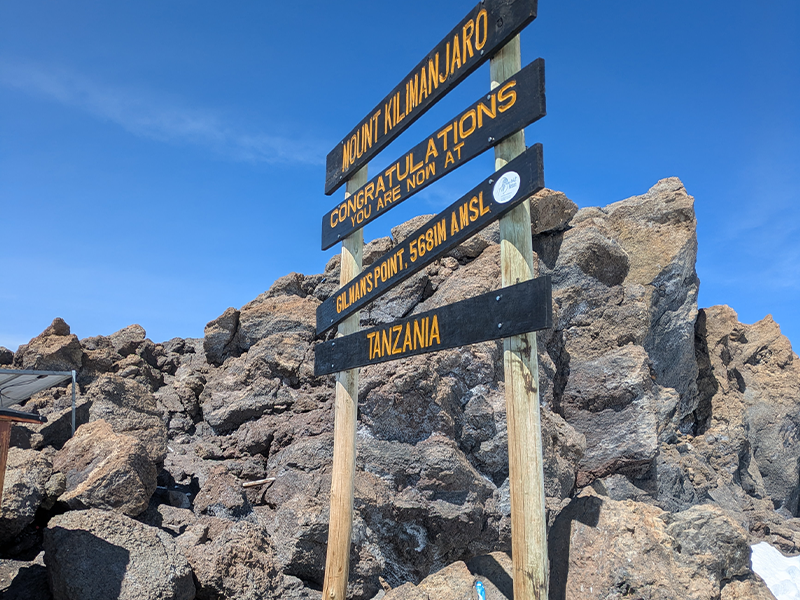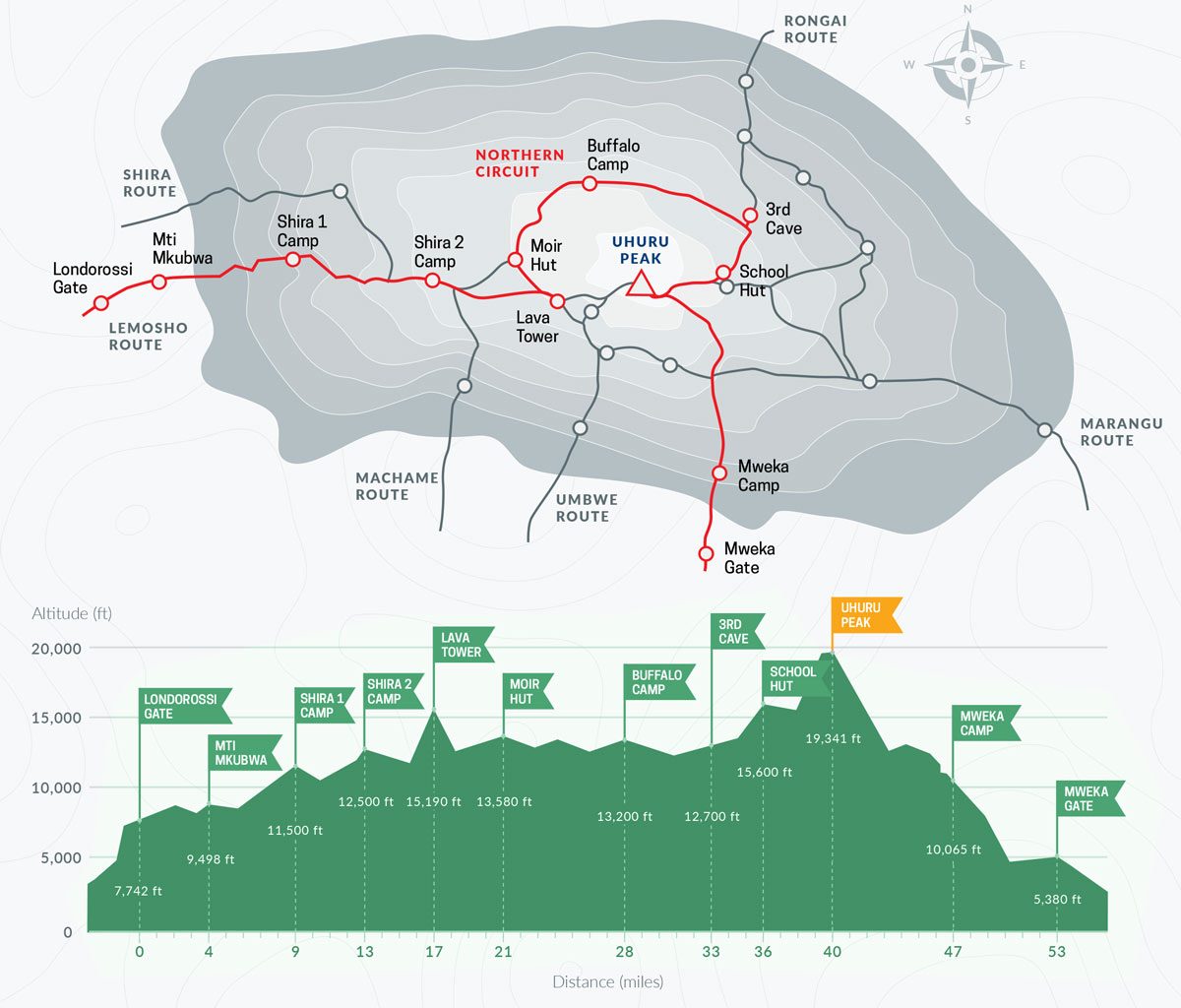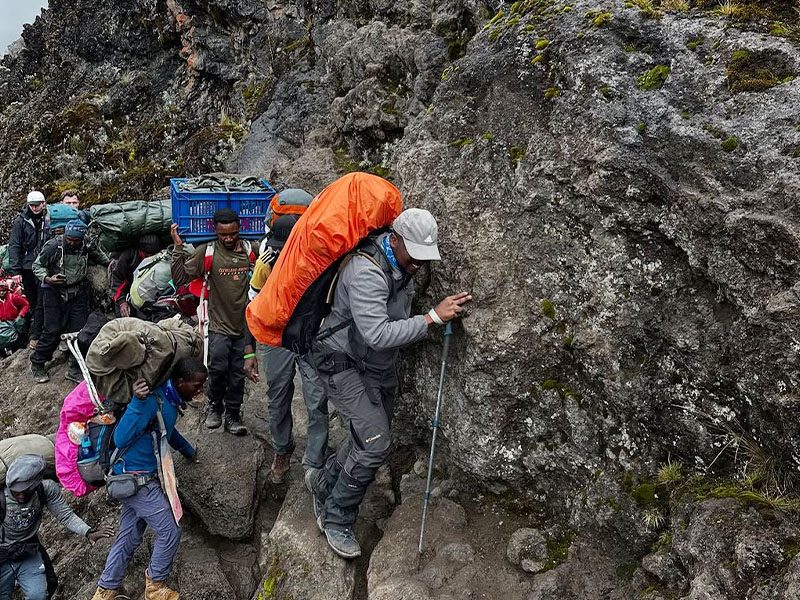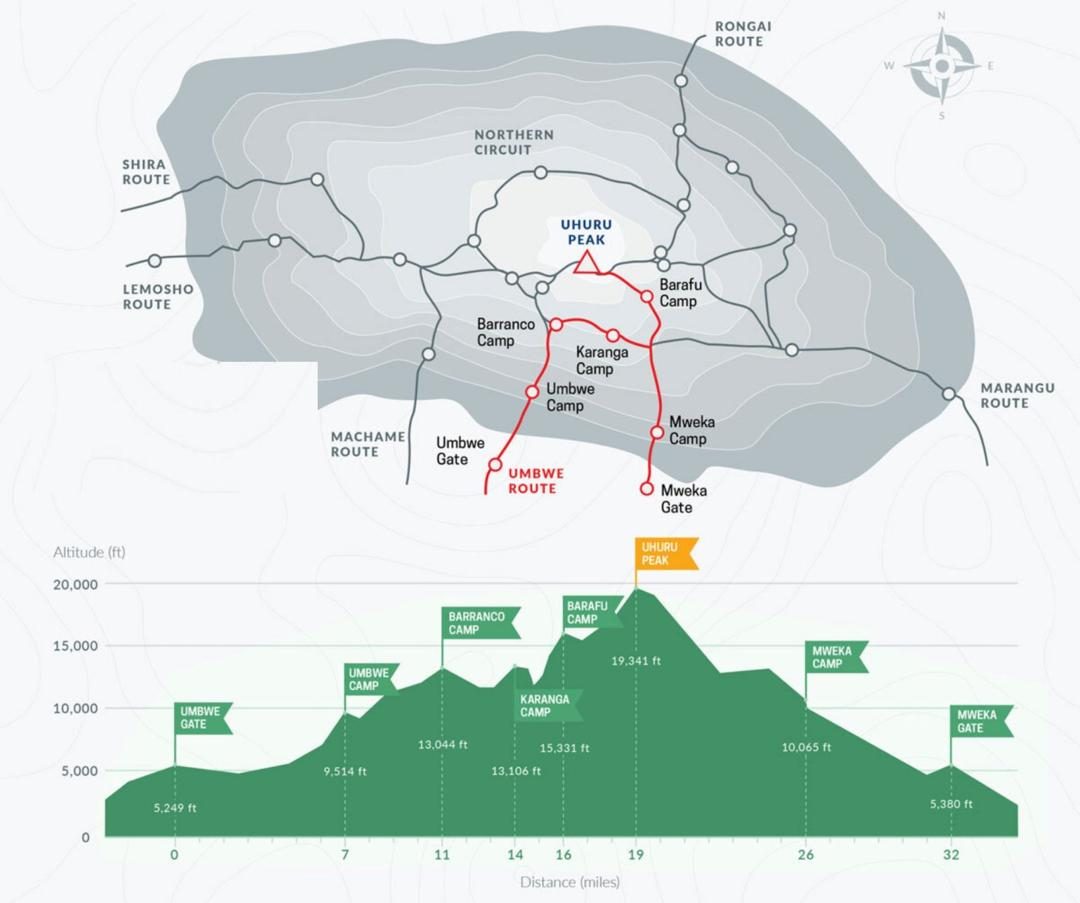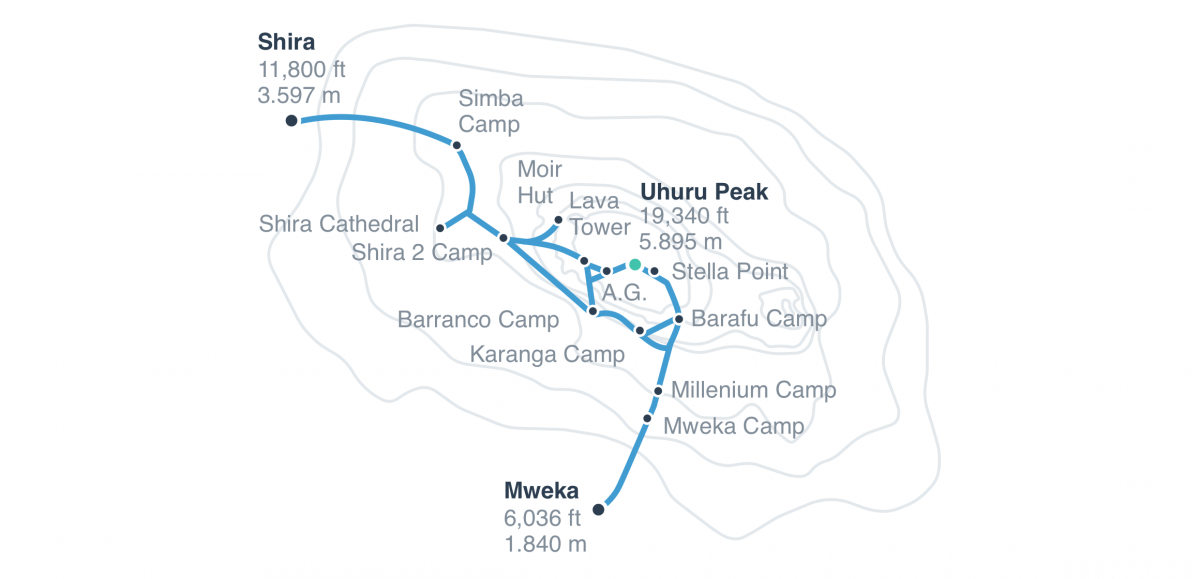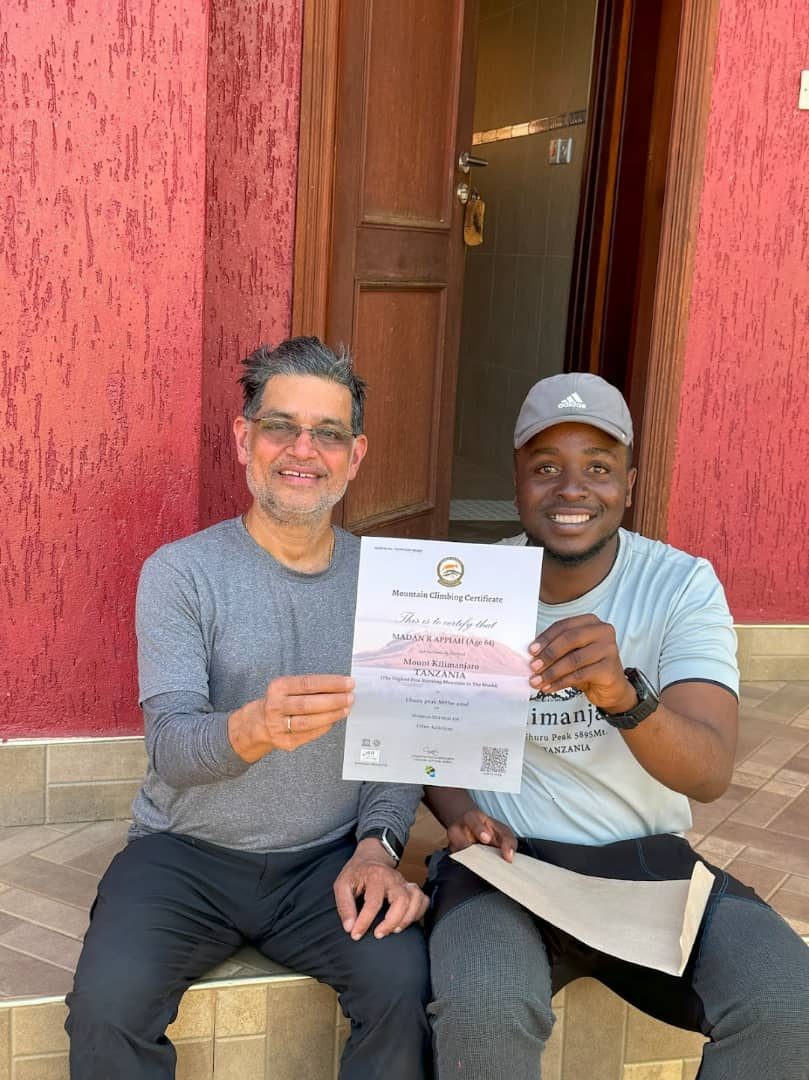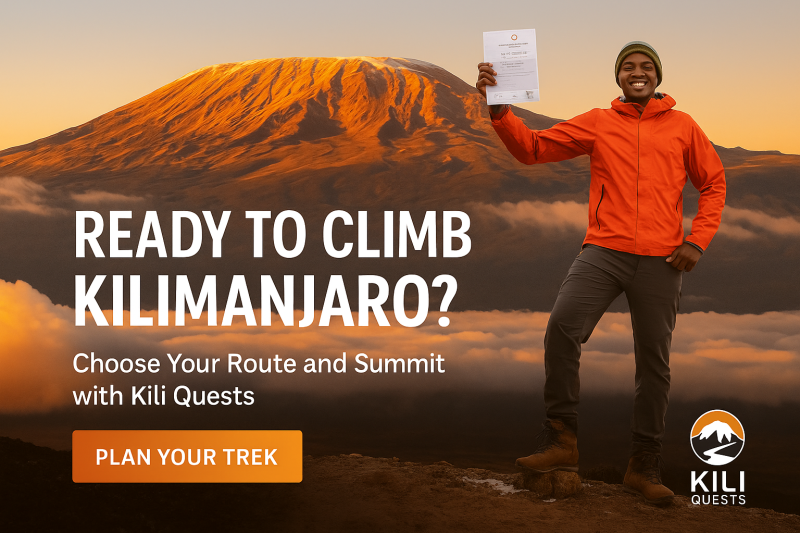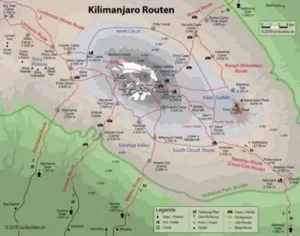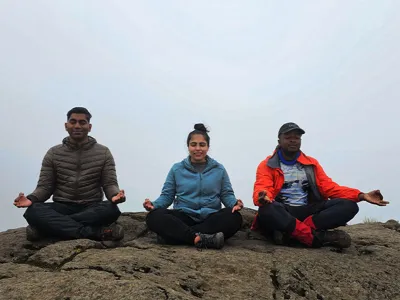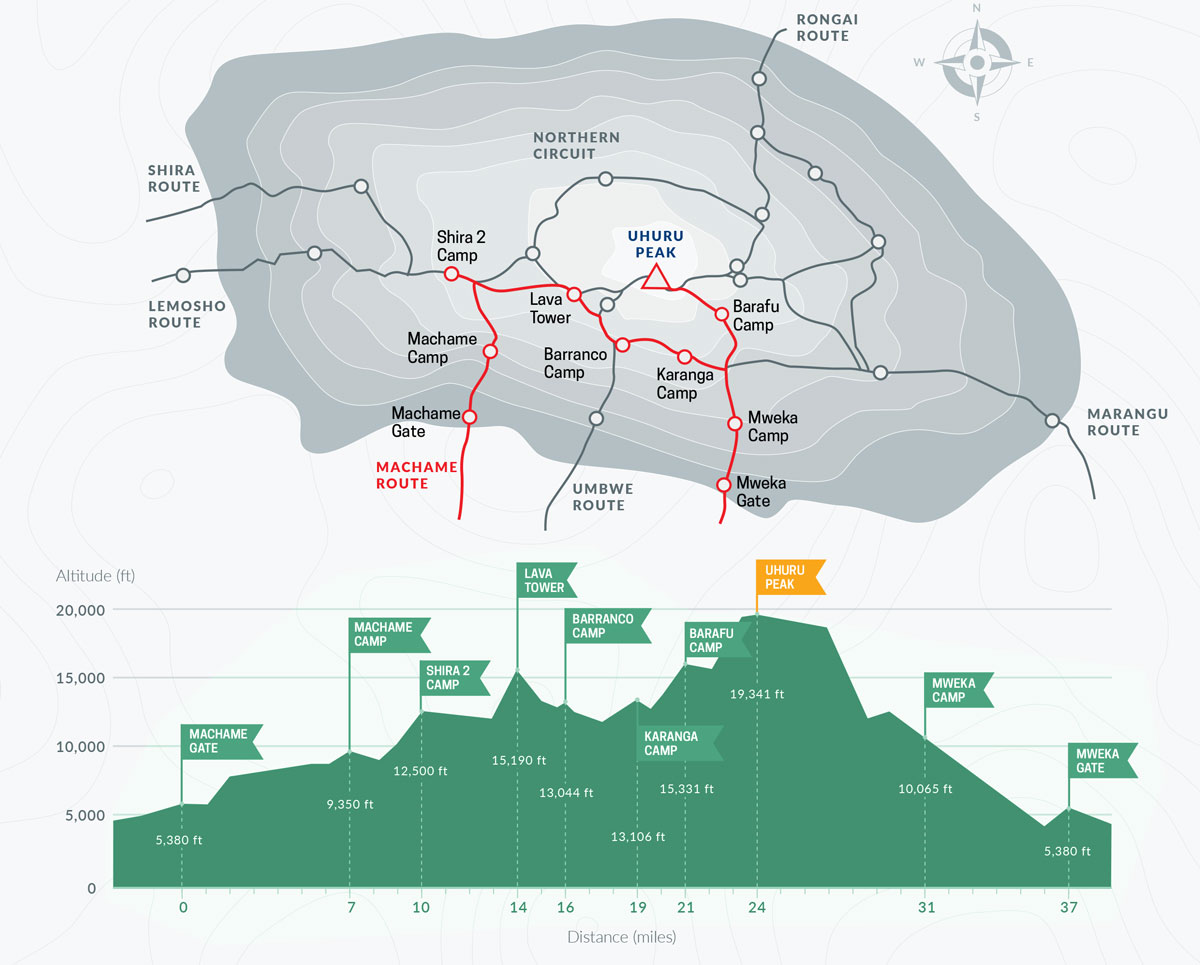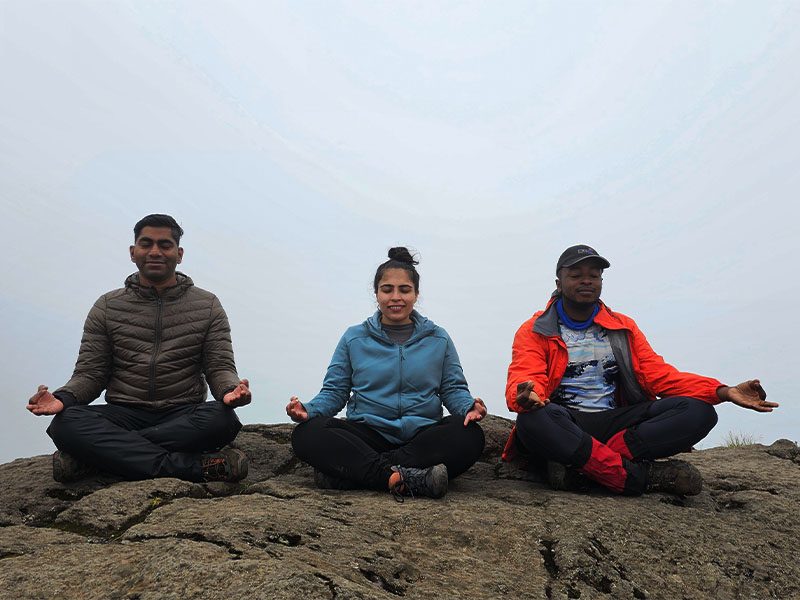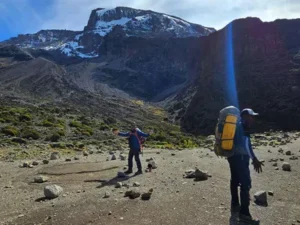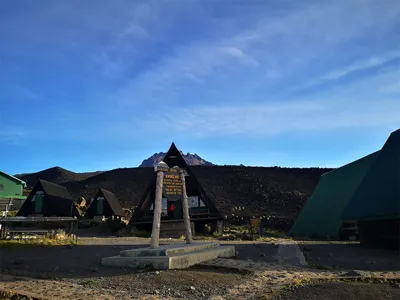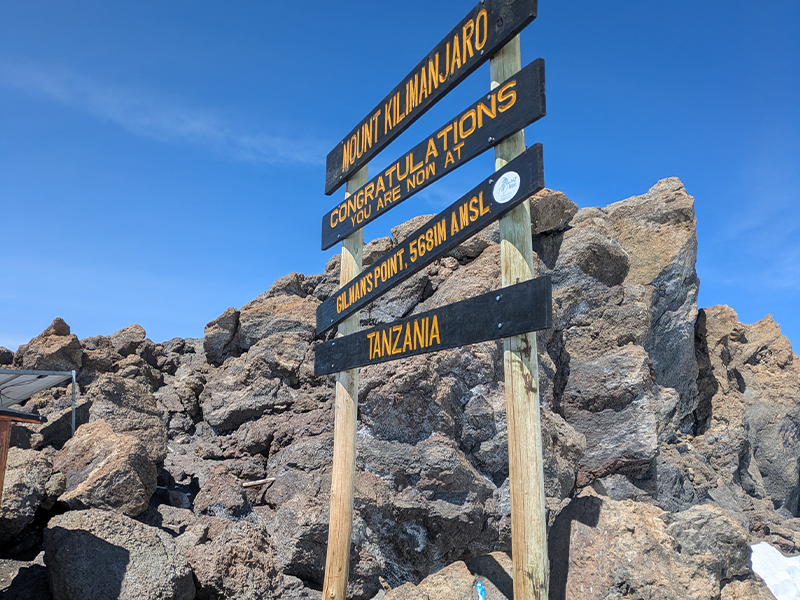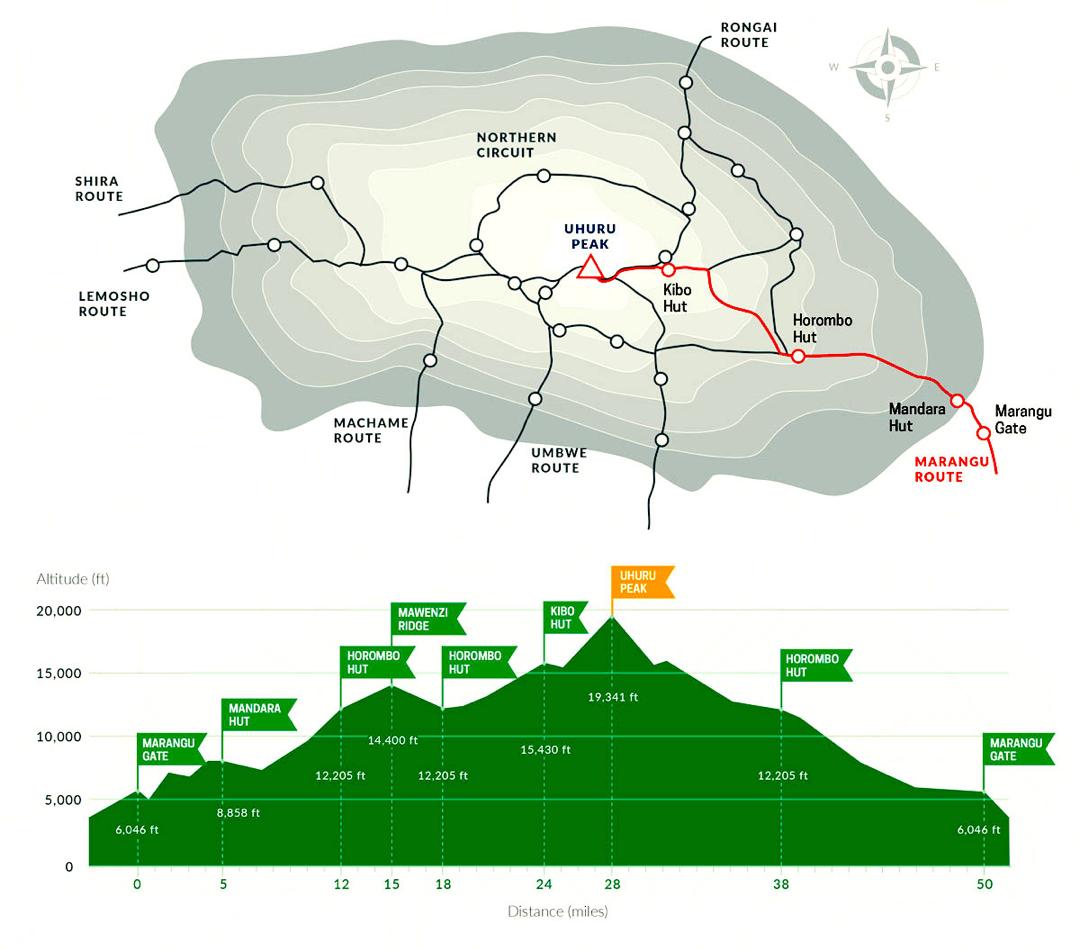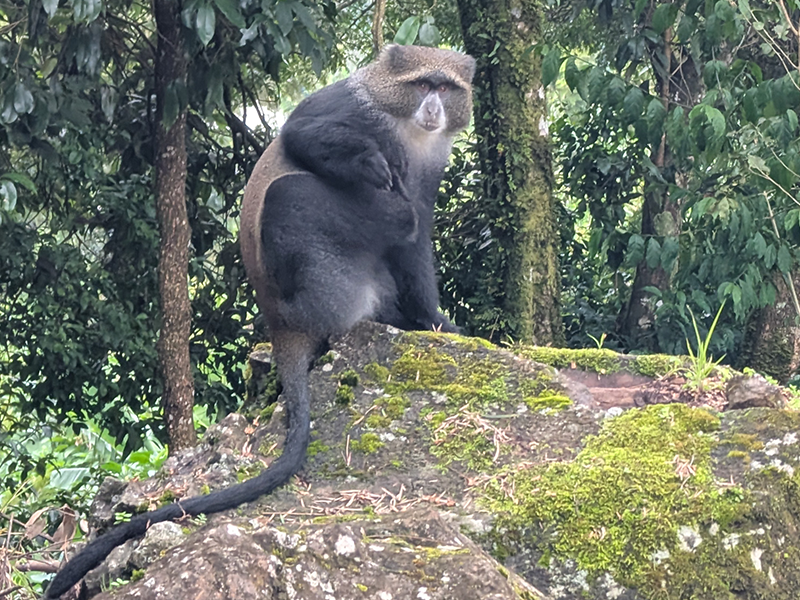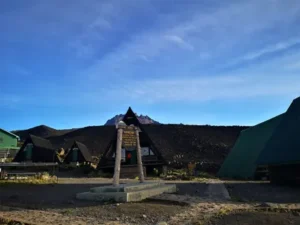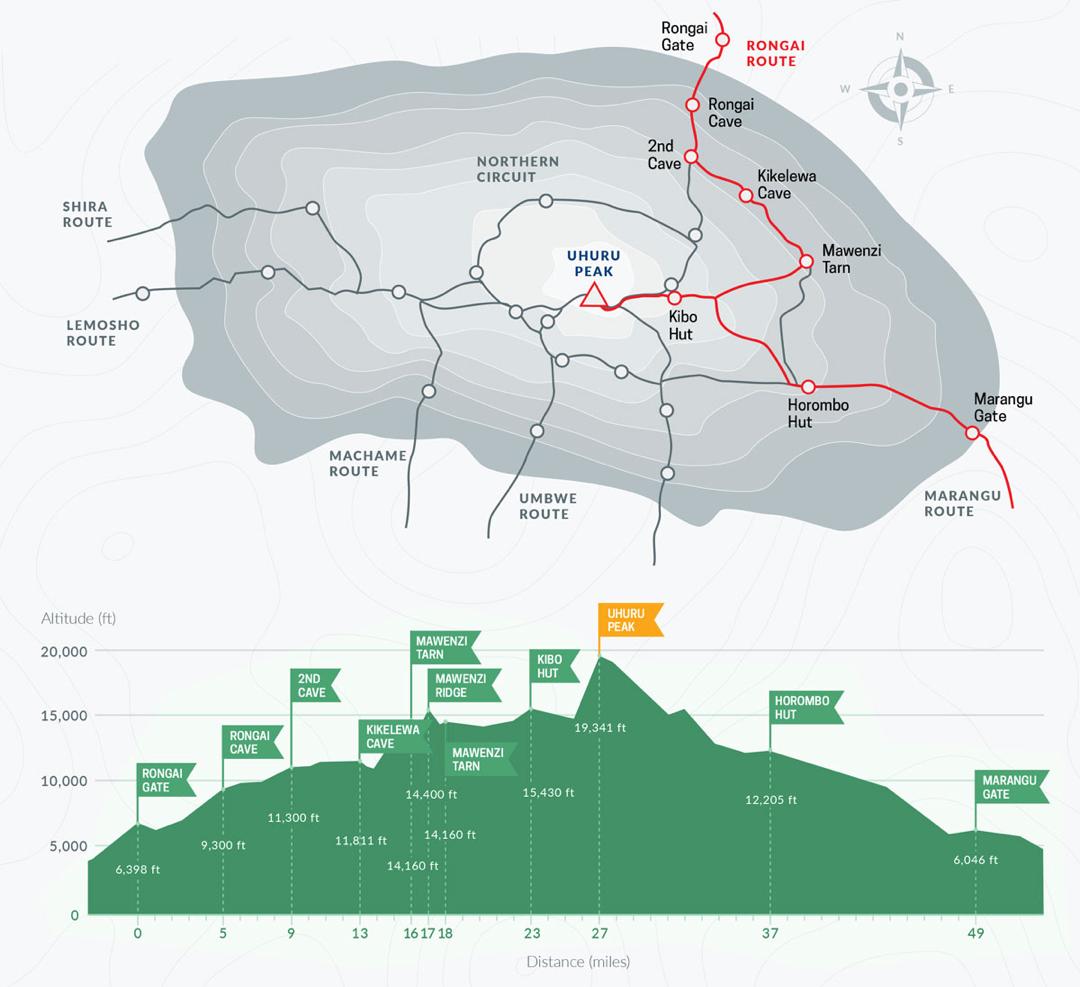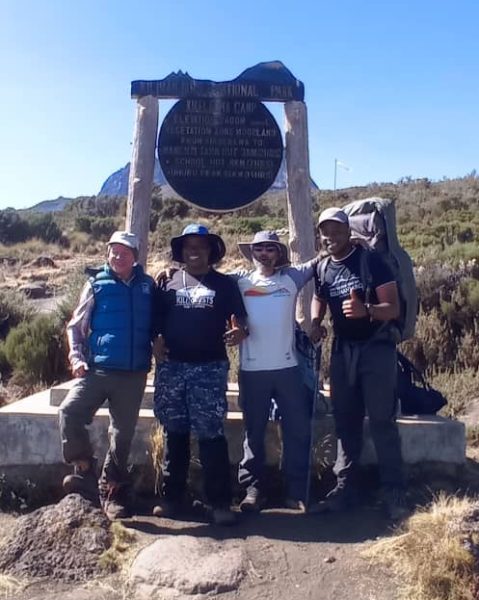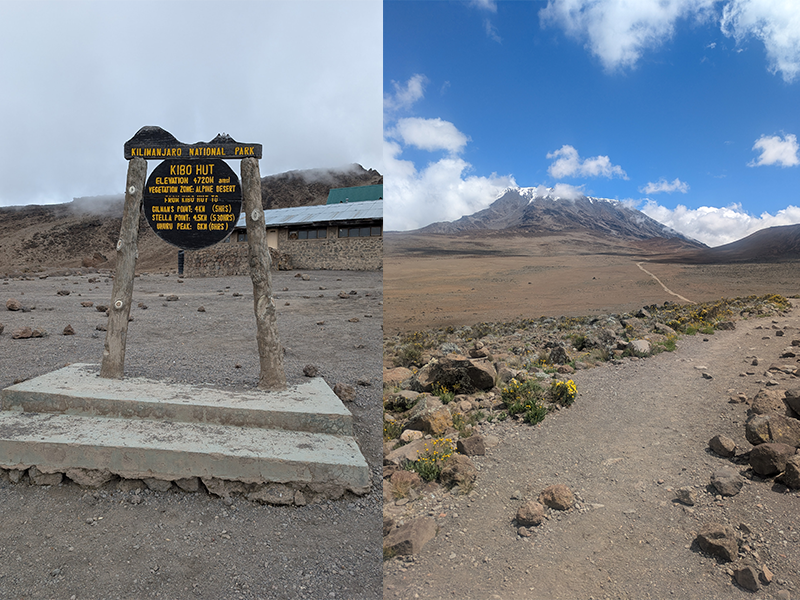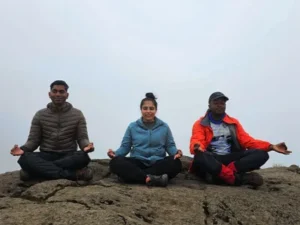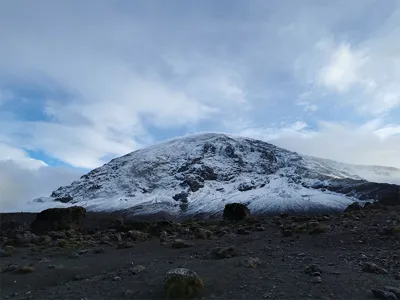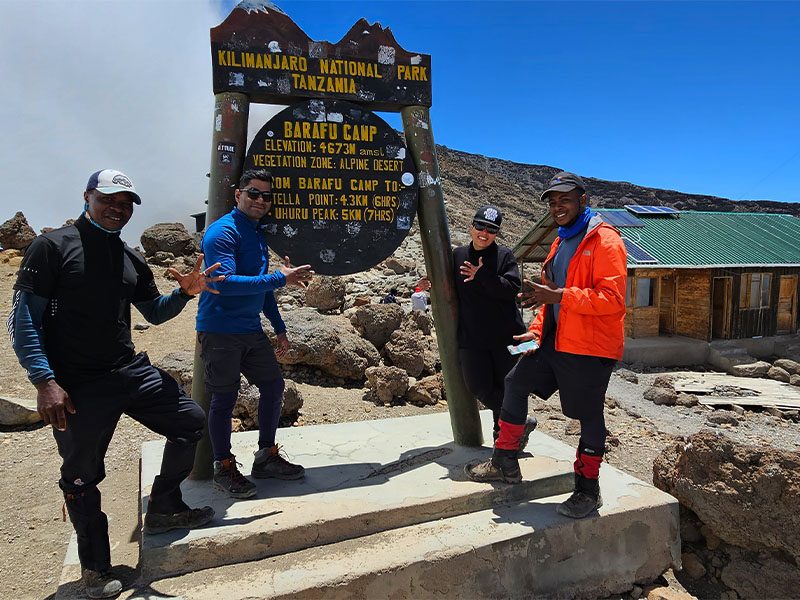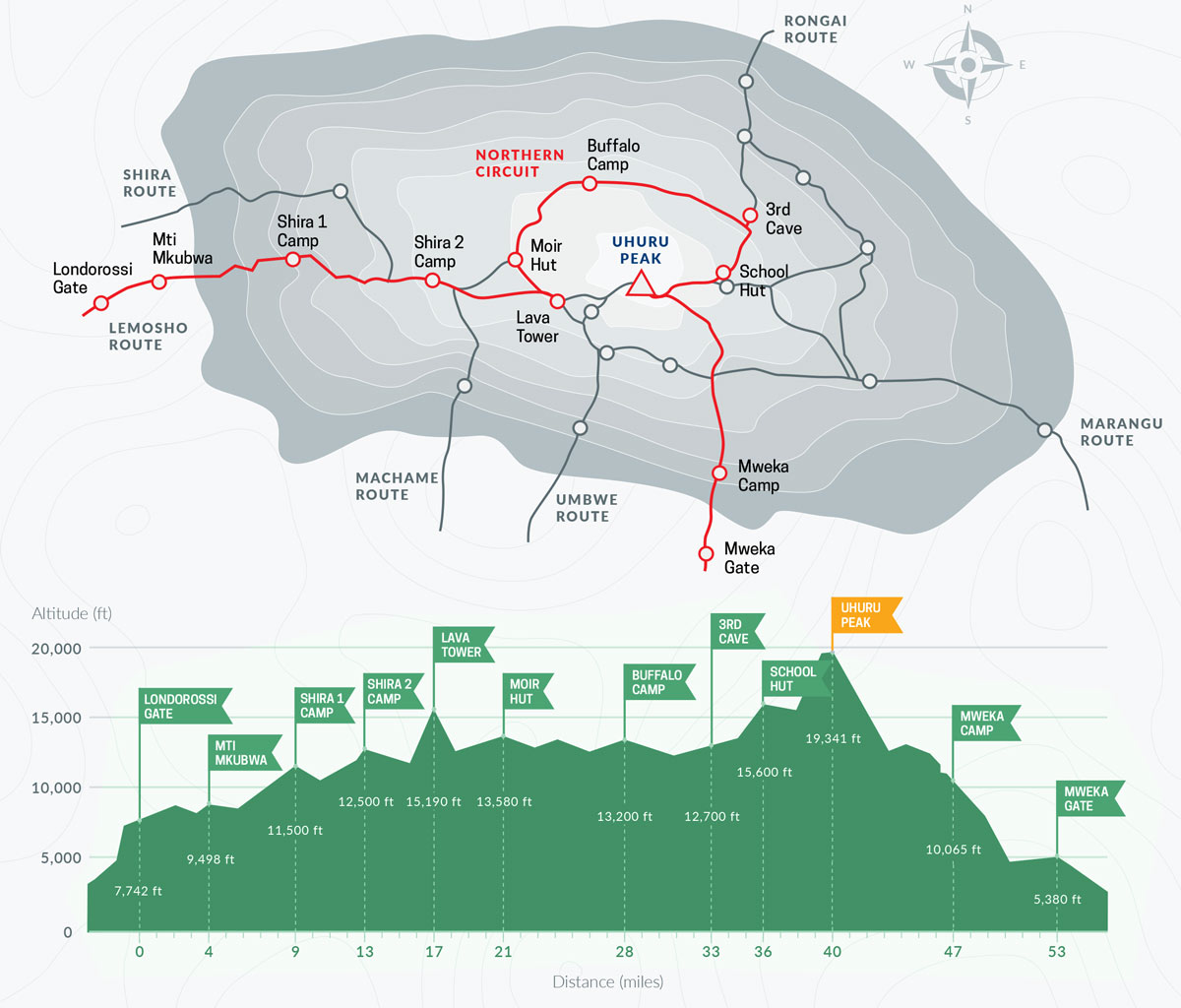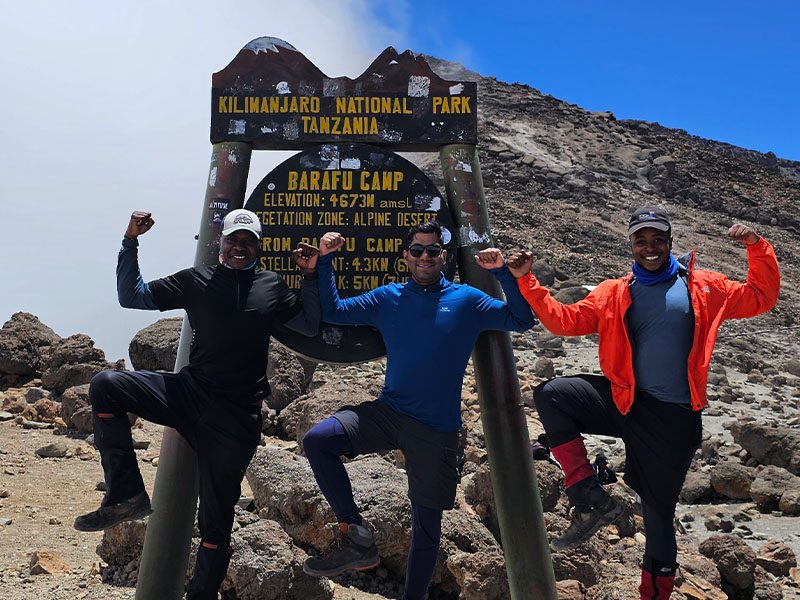Table of Contents
Altitude Sickness on Kilimanjaro: What You Need to Know
Mount Kilimanjaro rises to 5,895 meters (19,341 ft) — a height where oxygen levels drop by nearly 50% compared to sea level. While the climb doesn’t require technical skills, the biggest challenge for most trekkers is altitude sickness.In this guide, we’ll explain what altitude sickness is, how it affects climbers on Kilimanjaro, and how to reduce your risk through smart choices and preparation.
At Kili Quests, we offer fully guided climbs designed for beginners — meet our team in Climb with Experts
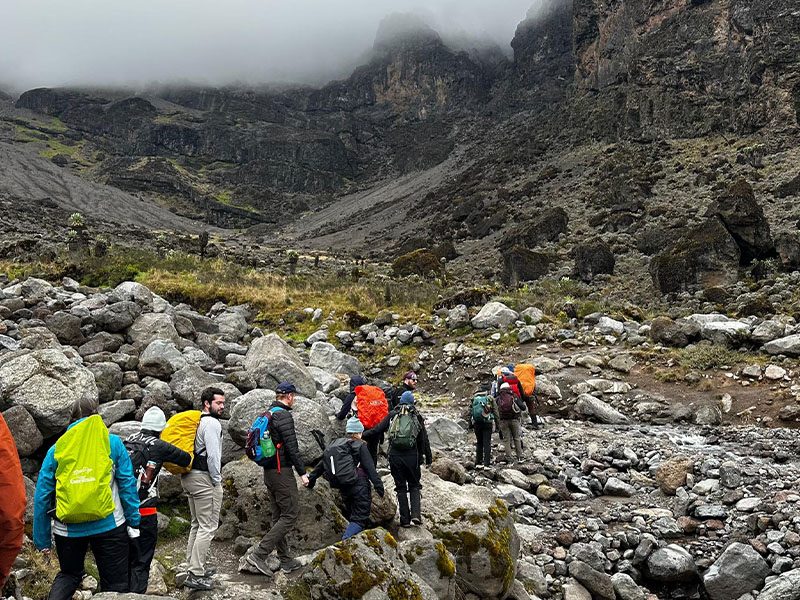
What Is Altitude Sickness?
Altitude sickness, or Acute Mountain Sickness (AMS), is the body’s response to reduced oxygen at high elevation. It can affect anyone — regardless of age, fitness, or past experience.
There are three common forms:
- AMS (Acute Mountain Sickness): Headache, nausea, fatigue, dizziness
- HAPE (High-Altitude Pulmonary Edema): Fluid in the lungs — life-threatening
- HACE (High-Altitude Cerebral Edema): Fluid in the brain — life-threatening
Read our Health & Medication Tips to know what to carry for altitude, digestion, and pain management.
Why Does Altitude Sickness Happen on Kilimanjaro?
Kilimanjaro’s ascent is fast — you go from under 2,000 m to nearly 6,000 m in just a few days. This doesn’t give your body much time to adjust to low oxygen levels.
Factors that increase risk include:
- Rapid ascent
- Not drinking enough water
- Poor physical condition
- Skipping rest days or acclimatization hikes
Common Symptoms to Watch For
Early symptoms of AMS include:
- Headache
- Nausea or vomiting
- Loss of appetite
- Dizziness
- Fatigue or weakness
- Poor sleep
More serious signs (HAPE/HACE) may include:
- Shortness of breath at rest
- Tight chest or persistent cough
- Difficulty walking straight ,associated with Ataxia
- Confusion or slurred speech
If symptoms get worse, descent is the only safe treatment.
Who Gets Altitude Sickness?
Anyone can. It doesn’t matter if you’re young or fit — altitude affects people differently.However, you’re at higher risk if:
- You’ve never been above 3,000 m
- You rush your ascent
- You don’t hydrate properly
- You ignore early symptoms
How to Prevent Altitude Sickness on Kilimanjaro
1. Choose the Right Route:
- Longer routes like Lemosho, Northern Circuit, and Machame (7-day) allow better acclimatization.
2. Climb High, Sleep Low:
- Routes with this natural altitude rhythm help the body adjust more easily.
3. Hike Slowly (Pole Pole):
- Pace is everything. Going slow reduces strain on your heart and lungs.
4. Stay Hydrated:
- Drink 3–4 liters of water per day to keep blood oxygen levels stable.
5. Eat Well:
- Don’t skip meals. Calories = energy for your body to adapt to altitude.
6. Use Medication (Optional):
- Talk to your doctor about Diamox (acetazolamide) — it can help prevent AMS by aiding breathing and acclimatization.
What to Do If You Feel Symptoms
If mild symptoms appear:
- Tell your guide immediately
- Rest and hydrate
- Take Diamox (if recommended)
- Skip or shorten the next day’s hike
If symptoms get worse:
- You must descend to a lower altitude
- Our guides are trained to monitor and support this process safely
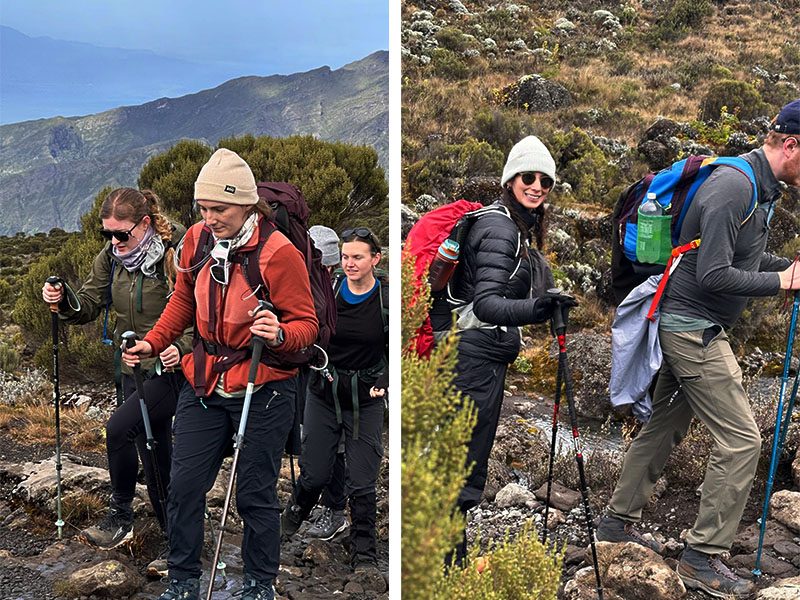
Trained Guides and Safety on the Mountain
At Kili Quests, your safety is our top priority.Our mountain guides are Wilderness First Responder (WFR) certified, meaning they are professionally trained in emergency care and high-altitude medical response.
Our team has extensive experience in identifying and managing altitude-related issues such as:
- Acute Mountain Sickness (AMS)
- High Altitude Pulmonary Edema (HAPE)
- High Altitude Cerebral Edema (HACE)
Each day on the mountain, our guides conduct twice-daily health checks, monitoring your oxygen levels and overall well-being. They are trained to recognize early warning signs and take immediate action — whether that means adjusting your pace, descending, or administering first aid.
When you trek with Kili Quests, you can be confident you’re in the hands of a team that understands altitude sickness and knows how to respond quickly and effectively.Acclimatization is the key to avoiding altitude sickness — learn how to climb high, sleep low, and pace yourself the right way.
Best Kilimanjaro Routes for Acclimatization
If you’re concerned about altitude, choose one of these:
- Lemosho Route (7 or 8 days) – Great balance of scenery and acclimatization
- Northern Circuit Route (9 days) – Longest and best for altitude
- Machame Route (7 days) – Popular, scenic, and effective for most first-time climbers
Avoid shorter routes like Marangu (5 days) unless you’re highly experienced.
Want the best acclimatization and fewer crowds? The Northern Circuit Route is Kilimanjaro’s longest trail — offering top success rates and stunning remote scenery.
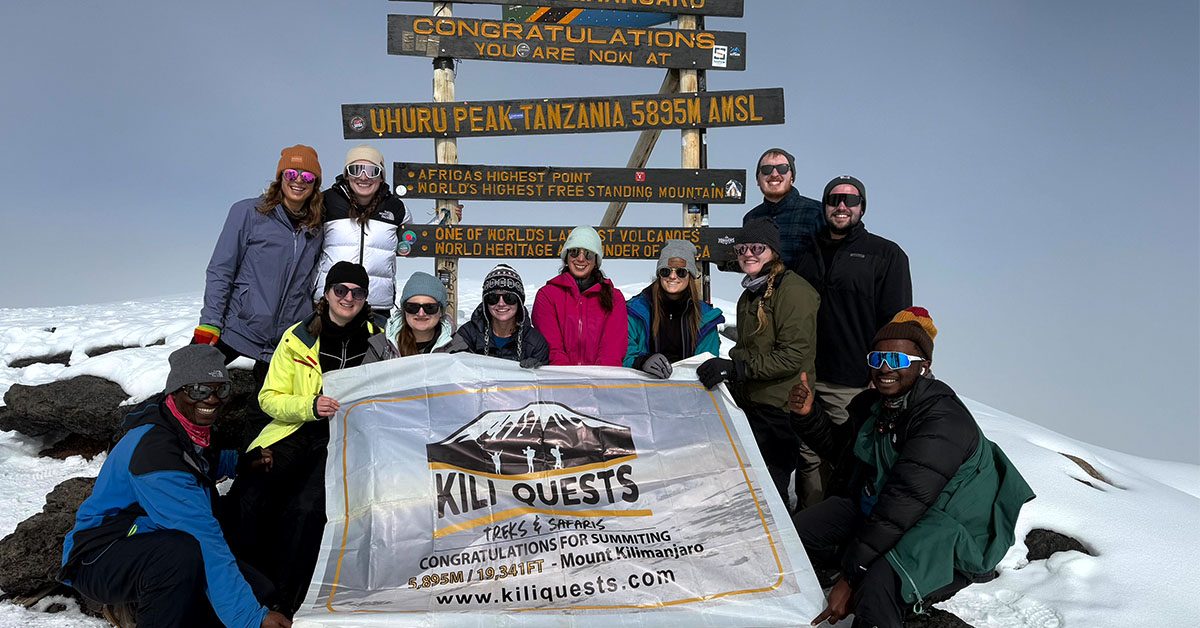
Other Acclimatization Tips Before Your Climb
- Sleep at altitude a few days before your trek (e.g., Arusha or highland hikes)
- Do day hikes above 2,500 m in your home country if possible
- Train with cardio and backpack hikes to prepare your lungs and legs
Stay Safe, Summit Smart
Altitude sickness is serious — but it’s not unbeatable. With the right route, smart pacing, good hydration, and an experienced guiding team, you can reduce the risk and improve your chances of reaching Uhuru Peak safely.
Need help choosing the best route for altitude acclimatization? Contact Kili Quests — we’re here to help you summit safely and successfully.
Contact us today to plan your Kilimanjaro adventure with Kili Quests.
Related Articles

Stay Clean on Kilimanjaro: Showers, Wipes & Hygiene
April 15, 2025
No Comments
Table of Contents Hygiene on Mount Kilimanjaro: Showers, Water, and Staying Fresh While Trekking Maintaining good hygiene during your Mount Kilimanjaro trek is essential for
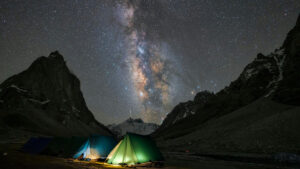
Guide to Cold Nights on Mount Kilimanjaro
April 13, 2025
No Comments
Table of Contents Mount Kilimanjaro Night Temperature: What to Expect During Your Trek and Summit Day | Kili Quests Climbing Mount Kilimanjaro is a
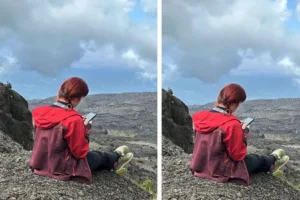
Climb Kilimanjaro Safely: High Altitude Sickness Guide
April 15, 2025
No Comments
Table of Contents Altitude Sickness on Kilimanjaro: What You Need to Know Mount Kilimanjaro rises to 5,895 meters (19,341 ft) — a height where


